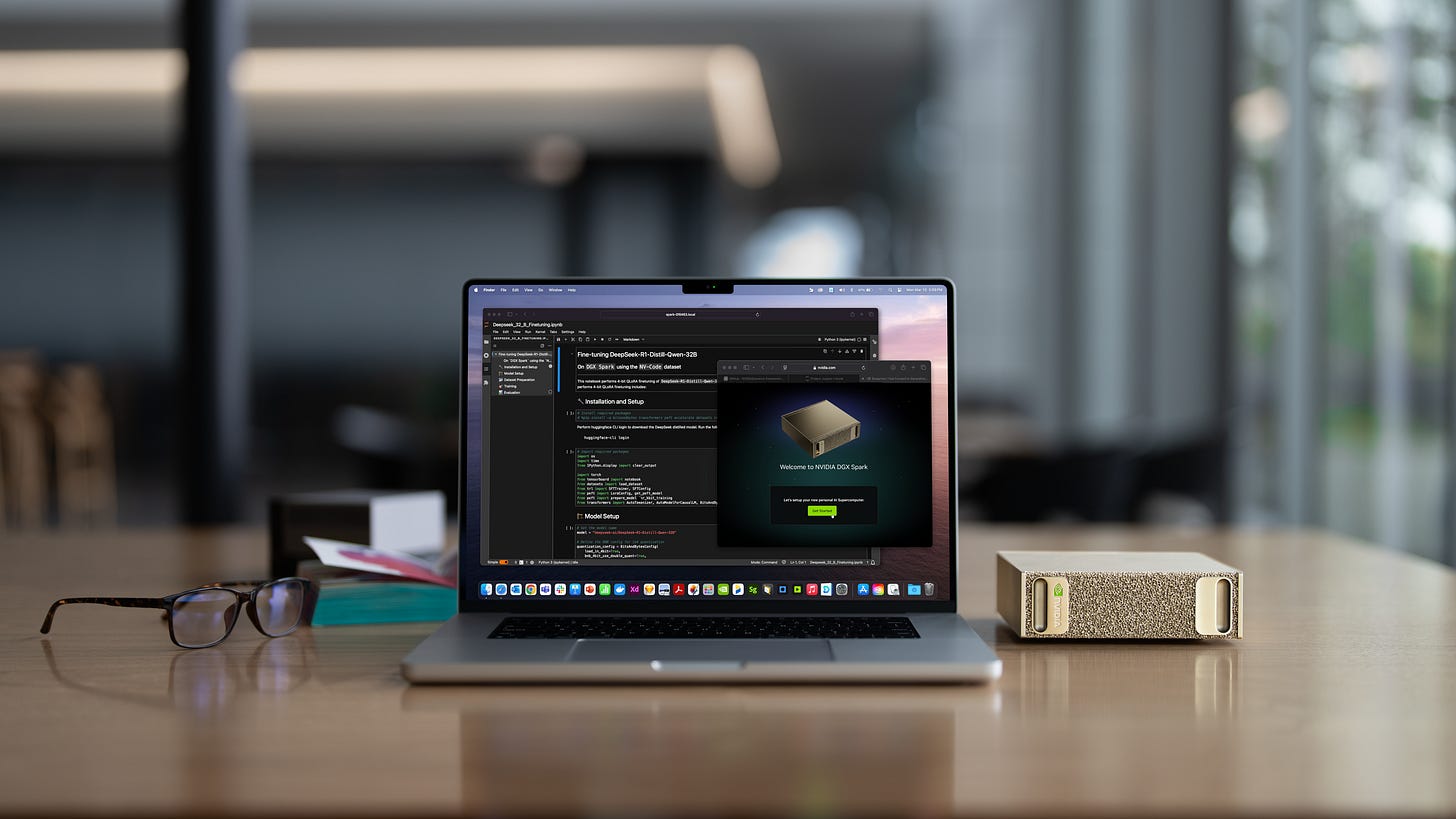Why buy Nvidia Spark vs Claude or OpenAI?
GDX Spark costs $4,000 while Claude Code tops at $200 a month
After watching some of my videos about the new NVIDIA GDX Spark, my friend Brandon had a great question — Why I’m Betting on Local AI Hardware at such a high cost, if I could just keep paying for Claude code and alike, and do it all remotely?
Before we continue, if you want to watch the video, please follow on:
- YouTube (playlist)
- X Nvidia GDX Spark (community)
It’s a great question and I bet it is something many people are asking themselves right now. I totally get it—it’s a smart, cost-effective approach to use the APIs, and it doesn’t require tinkering with local hardware. But honestly, that’s not why I’m diving into this.
For the last few months, while building all the tools I’ve been talking about, I’ve been burning through about $1,000 a month on Cloud Code alone. I am not waiting for no limits, I just go straight for the API and get the Opus model to go full speed.
It sound expensive, but the price isn’t the point. Even if you’re looking at $12,000 a year for top-tier hardware, that’s virtually free compared to what big tech companies pay their engineers for similar work. Salaries in this space are massive, so hardware costs? Practically negligible. I am blowing through 1 Spark every 3 months only; I could do 3-5x if you let me!
The real driver to try a local device like Nvidia Spark here is the future of AI—and how we use it.
I see a world where we seamlessly switch between online and offline models. Offline AI is going to handle the mundane, working 24/7, augmenting our data, streamlining our workflows, and just... working while we sleep, and then working while we are working, and then working when we are not working. For the compute-intensive stuff, we’ll offload that work to the cloud GPUs, or more specifically, our local AIs will request help from the cloud AIs.
Local for everyday efficiency, cloud for the big guns.
Personally, I don’t want to be at the mercy of what OpenAI (or any other giant) decides tomorrow. Will they secure more funding? Will they run into data center restrictions or shifting regulations across countries? I love AI—it’s my daily go-to tool—and I would rather not lose access because of external factors.
Losing access to AI at this point will be equivalent to losing clean water.
Looking 18 months ahead, local AI is going to explode. I want to be ahead of the curve, fully immersed when it becomes the norm, not scrambling to catch up.
NVIDIA Spark isn’t just hardware—it’s a gateway. It does everything a standard NVIDIA chip can, but right on your desktop. Once we master local setups, scaling to NVIDIA’s cloud for complex workflows is seamless. It’s all in one ecosystem, making experimentation easy and powerful.
Is it the absolute best local AI hardware out there right now? Maybe not. But it’s NVIDIA, and that means compatibility, reliability, and a playground for innovation. I want to tinker, test limits, and see what’s possible (and what’s not).
Once dialed in, this setup runs 24/7 for way less than constant cloud reliance. It’s efficient, it’s yours, and it’s future-proof.
— Kirill
p.s. If you find this interesting, follow along on X, YouTube, or here on Substack.


